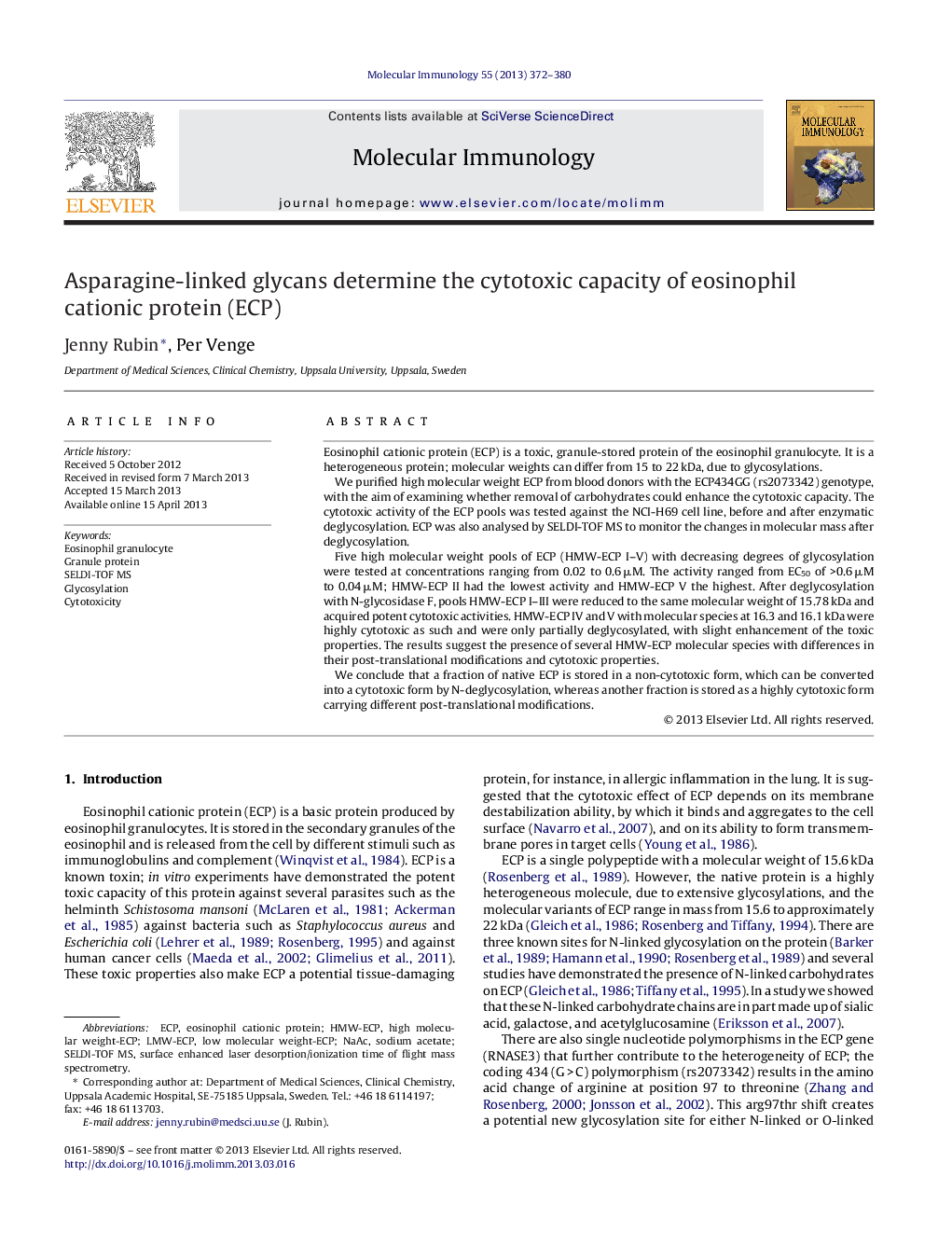| کد مقاله | کد نشریه | سال انتشار | مقاله انگلیسی | نسخه تمام متن |
|---|---|---|---|---|
| 2830884 | 1570727 | 2013 | 9 صفحه PDF | دانلود رایگان |

• Native ECP was purified and fractionated from eosinophils of healthy blood donors.
• SELDI-TOF MS analysis revealed multiple molecular variants of ECP differing in mass.
• A high level of glycosylation was correlated to low cytotoxic activity in vitro.
• Enzymatic deglycosylation enhanced cytotoxicity of native ECP.
• Other post-translational modifications than glycosylation might also influence cytotoxicity.
Eosinophil cationic protein (ECP) is a toxic, granule-stored protein of the eosinophil granulocyte. It is a heterogeneous protein; molecular weights can differ from 15 to 22 kDa, due to glycosylations.We purified high molecular weight ECP from blood donors with the ECP434GG (rs2073342) genotype, with the aim of examining whether removal of carbohydrates could enhance the cytotoxic capacity. The cytotoxic activity of the ECP pools was tested against the NCI-H69 cell line, before and after enzymatic deglycosylation. ECP was also analysed by SELDI-TOF MS to monitor the changes in molecular mass after deglycosylation.Five high molecular weight pools of ECP (HMW-ECP I–V) with decreasing degrees of glycosylation were tested at concentrations ranging from 0.02 to 0.6 μM. The activity ranged from EC50 of >0.6 μM to 0.04 μM; HMW-ECP II had the lowest activity and HMW-ECP V the highest. After deglycosylation with N-glycosidase F, pools HMW-ECP I–III were reduced to the same molecular weight of 15.78 kDa and acquired potent cytotoxic activities. HMW-ECP IV and V with molecular species at 16.3 and 16.1 kDa were highly cytotoxic as such and were only partially deglycosylated, with slight enhancement of the toxic properties. The results suggest the presence of several HMW-ECP molecular species with differences in their post-translational modifications and cytotoxic properties.We conclude that a fraction of native ECP is stored in a non-cytotoxic form, which can be converted into a cytotoxic form by N-deglycosylation, whereas another fraction is stored as a highly cytotoxic form carrying different post-translational modifications.
Journal: Molecular Immunology - Volume 55, Issues 3–4, October 2013, Pages 372–380